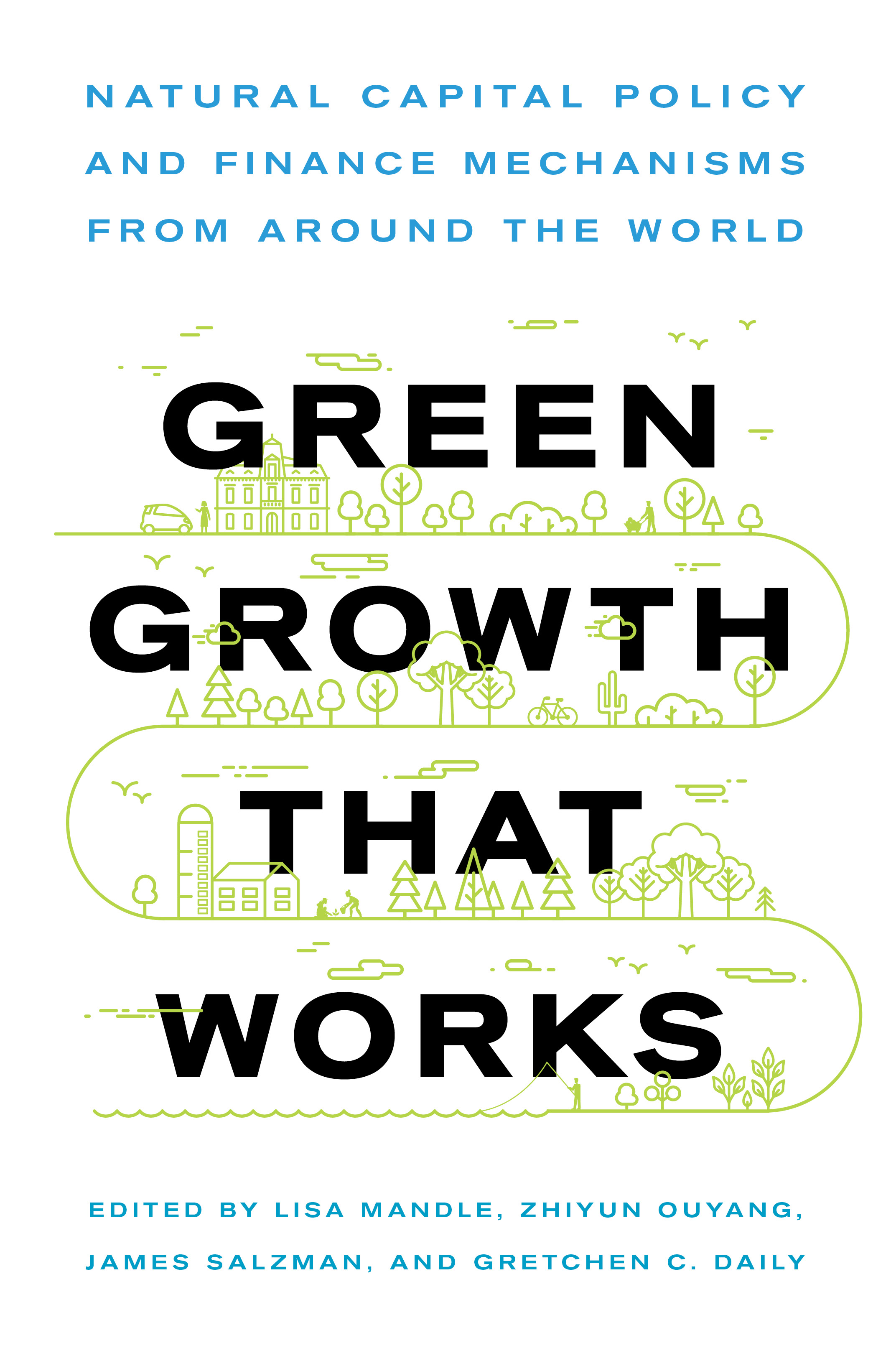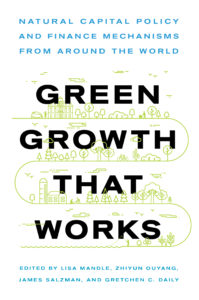Green Growth That Works
Legal Planet: Environmental Law and Policy 2019-09-12

 Since the Industrial Revolution, growth in human numbers and economic activity has dramatically transformed our planet. Rapid economic development has lifted hundreds of millions of people out of poverty and raised the standard of living and life expectancies of many more, but these forms of growth have also deeply eroded the natural capital embodied in our lands, waters, and biodiversity.
Since the Industrial Revolution, growth in human numbers and economic activity has dramatically transformed our planet. Rapid economic development has lifted hundreds of millions of people out of poverty and raised the standard of living and life expectancies of many more, but these forms of growth have also deeply eroded the natural capital embodied in our lands, waters, and biodiversity.
The degradation and loss of primary forests, wetlands, coral reefs, grasslands, and other ecosystems – along with the species living in them and waters flowing through them – are rarely captured in market prices. But they exact a very real cost, casting a long shadow over future well-being. Taken together, they threaten the security of food, water, climate, energy, health, and livelihoods.
Clearer recognition of natural capital’s importance has sparked policy innovations around the world. In 2000, the term “ecosystem services” was scarcely known. As my earlier blog post explained, there are now over 550 payment for ecosystem services programs around the globe with annual payments exceeding US$36 billion.
In 2017, China’s Department of Development asked the Natural Capital Project for a report and training on international experience in the broader domain of finance and policy. In drafting the report, we found many examples of important innovations for green development. But these were scattered across the academic literature, white papers, and reports, or locked in the minds of the leaders who shepherded them from idea to implementation. In synthesizing this information for Chinese officials, we realized it could form the foundation for serving a wider, global audience.
The result is a new book published by Island Press, Green Growth That Works: Natural Capital Policy and Finance Mechanisms from around the World. Co-edited with the ecologists Gretchen Daily and Lisa Mandle from Stanford, and Zhiyung Ouyang from the Chinese Academy of Sciences, we shaped the book to provide a practical guide to policies and finance mechanisms from around the globe designed to secure both development and enhanced natural capital. A series of case studies written by practitioners explore six broad approaches to conserve and restore ecosystems: government subsidies, regulatory-driven mitigation, voluntary conservation, water funds, market-based transactions, and bilateral and multilateral payments.
Each case study illustrates a specific type of mechanism and how it has been applied in practice. The cases span a great diversity of geographies and ecosystems, from coral reef restoration in the Caribbean and water funds in South America to urban planning in France and land use planning in Myanmar. To make comparisons straightforward, the case studies all follow a common format. From this breadth of experience, we can assess which approaches have worked best, as well as the opportunities to scale and improve successful models.
The term, win-win, is grievously over-used, but it captures the essence of what many countries are now calling “green growth.” In many respects, this term is a rebranding of sustainable development. Our book seeks to present international best practice of green growth policies in a uniform and user-friendly format. With the Amazon burning, Greenland melting, and coral reefs bleaching, there is no better time to share our common experiences.
p.s. If you order the book, the code “GROWTH” provides a 20% discount on the Island Press website.